- Culture
- Mexico
- Inspiration
- See & Do
Planning your own trip? Prepare for your trip
Use Rough Guides' trusted partners for great rates
Travel advice for Mexico
From travel safety to visa requirements, discover the best tips for visiting Mexico
Plan and book your private, tailor-made tour with vetted local experts
While Cancún, Puerto Vallarta, and Mexico City get most of the attention, the real heart of the country beats in its smaller towns. Recognized for their culture, history, and setting, Mexico’s pueblos mágicos – or magic towns – offer a more grounded, often more interesting side of travel. From the cobbled streets of San Cristóbal de las Casas to out-of-the-way mountain villages you’ve never heard of, these spots pack in a lot of character. We’ve rounded up the best Mexico pueblos mágicos to visit – perfect additions to your Mexico trip guide if you want to skip the obvious.
Mexico’s pueblos mágicos aren’t just pretty towns – they’re some of the best places to visit in Mexico if you’re after real stories, regional food, and a feel for daily life. They range from desert outposts and colonial cities to beachside villages and jungle hideaways. Some are easy day trips from big hubs like Mexico City or Guadalajara. Others take more effort – but that’s part of the appeal.
Planning a Mexico itinerary? Dropping in a few pueblos mágicos is a smart way to break up long drives, escape the tourist crowds, and see a more local side of the country. Plus, each one has its vibe. You might find street markets in one, ancient ruins in another, and natural hot springs or waterfalls just a short drive away.
The best time to visit Mexico depends on where you're headed. Winter is ideal for cooler regions like the central highlands, while the dry season (November to April) is best for coastal towns. Summer can bring rain and heat, but also fewer crowds, especially in less touristy pueblos.
The short version? Don’t just stick to the big names. The magic is often in the margins.
Set high in the Chiapas highlands, San Cristóbal de las Casas is one of the most atmospheric colonial towns in Mexico – all cobbled streets, candy-colored houses, and cloud-wrapped mountains. There’s a strong Indigenous presence here, and the blend of cultures shows up in everything from the local textiles to the daily markets.
This town hits that sweet spot: affordable, walkable, and packed with character. You’ll find hole-in-the-wall taco joints next to rooftop mezcalerías and buzzy artisan cafés. Outside town, take a boat trip through the dramatic Sumidero Canyon or head to El Chiflón’s crashing waterfalls.
Looking for bucket-list things to do in Mexico? Add San Cristóbal. Even the Mayan ruins of Palenque are (relatively) close – a six-hour drive through jungle-draped scenery.
Fly into Tuxtla Gutiérrez – about 80km away – with regular flights from Mexico City and Cancún. Buses and shared shuttles take around 1.5 hours. The drive is scenic but winding. Once you're in town, ditch the car – the center is compact, walkable, and packed with cafés, markets, and plazas worth exploring on foot.
Visit from November to April – the dry season – for sunny days and cool nights. The rainy season (May to October) brings fewer tourists and lush surroundings. Holy Week is festive but crowded. Even in summer, nights are cold due to the altitude – bring layers. For fewer crowds and pleasant weather, late February or early March is ideal.

Mayan ruins in Palenque, Mexico — within reach of one of Mexico's best pueblos magico © Shutterstock
Just an hour south of Mexico City, Tepoztlán blends Indigenous heritage, market culture, and mountain scenery into one unforgettable stop. It was one of the first towns to earn pueblo mágico status – and it still ranks among the best pueblos mágicos in Mexico.
Come on a weekend and you’ll hit peak energy. Cobbled streets fill with craft stalls, mole vendors, mariachi bands, and street food worth queuing for. There’s a real buzz, especially with day-trippers from the capital.
It’s not just about shopping and snacking, though. The uphill trail to El Tepozteco – a ruined Aztec temple perched above the town – rewards you with panoramic views of the cliffs and valley below.
If you're mapping out a Mexico City itinerary, Tepoztlán makes a solid day trip or overnight break. It’s close, culturally rich, and just far enough to feel like you’ve escaped the city.
Tepoztlán is about 90 minutes from Mexico City by bus or car. Buses leave regularly from the Terminal de Autobuses del Sur. Driving is straightforward – just avoid peak weekend traffic in and out of the capital. Once you’re there, the town is walkable, though the El Tepozteco trail is steep and rocky.
Visit midweek for fewer crowds and better hotel deals. Weekends are lively but packed, especially with Mexico City visitors. Dry season – November to April – is best for hiking. Late February brings Carnival, one of the town’s biggest and wildest events. If you're after markets and energy, go on a Sunday – that’s when the town is at its most vibrant.

Tepoztlan pueblos magicos in Morelos, Mexico © Shutterstock
Small, sandy, and seriously laid-back, Mazunte is one of the most soulful magic towns on Mexico’s Pacific coast. Once a turtle-hunting village, it’s now a hub for eco-conscious travellers, yoga fans, and anyone looking for a slower pace than Puerto Escondido up the road.
You’ll find one main dirt road lined with palm-shaded restaurants, juice bars, and beachy boutiques. Beyond that – sun, sand, and sea. Mazunte’s curved bay easily ranks among the best beaches in Mexico for watching the sun go down. For front-row views, hike up to Punta Cometa – a rugged headland where the Pacific puts on a nightly show.
Most people reach Mazunte by taxi or colectivo from Puerto Escondido or Zipolite. Moped trips are popular, but the roads are rough and best left to confident riders.
Come for the beach, stay for the vibe – just skip weekends if you want it quiet.
The easiest way to reach Mazunte is from Puerto Escondido – about an hour away by taxi or colectivo. Buses don’t go all the way in, so expect to transfer. If you’re an experienced rider, renting a scooter is an option, though the roads can be rough and steep in parts.
The dry season – November to April – is ideal for beach days and coastal hikes. Temperatures rise in March and April, but ocean breezes help. Avoid peak holidays like Christmas or Easter unless you’re booking early – Mazunte gets busy fast. Visit midweek for quieter beaches, open tables, and fewer tour groups on the Punta Cometa trail.

Mazunte, Oaxaca, Mexico © Shutterstock
North of Puerto Vallarta on the Riviera Nayarit, Sayulita has gone from fishing village to full-blown boho magnet. Colorful flags flutter above cobbled streets lined with surf shops, smoothie bars, and galleries selling Huichol beadwork. It’s a little chaotic, a little commercial – but still charming.
Sayulita’s mellow surf and daily yoga sessions attract a mix of sunseekers and creatives, and the beach has become a hub for slow mornings and sunset beers. Between December and April, it’s also prime whale-watching territory. You can spot humpbacks breaching just offshore.
If you’re after relaxing vacations with a splash of energy and color, this is your spot. Sayulita is one of the most popular vacation spots in Mexico for good reason – it’s easy to reach, easy to love, and hard to leave.
Fly into Puerto Vallarta, then grab a taxi or local bus for the 1-hour drive north. Buses are cheap and frequent, but traffic can slow things down. Once in town, everything is walkable – no car needed.
November to April is the sweet spot – dry weather, warm seas, and whale sightings. Sayulita gets crowded over Christmas and Easter, so book early or aim for the shoulder season in late October or early May. Summer is rainier and humid but quieter, especially midweek.

Sayulita, Mexico © Shutterstock
Three hours south of Mexico City, Taxco spills dramatically down a hillside, its whitewashed houses, red-tiled roofs, and winding cobbled streets looking like they’ve been lifted from a painting. It’s the only pueblo mágico in Guerrero – and easily one of the best pueblos mágicos in central Mexico.
Taxco built its reputation on silver. Once a major mining center, it’s now known for high-quality silversmithing. You’ll find workshops, family-run shops, and markets stacked with handcrafted jewellery. Some of the old mines can be toured too, if you want to see where it all started.
Architecture lovers shouldn’t miss Santa Prisca – a pink-stone baroque church that towers over the town. Visit in late November or early December for the Feria Nacional de la Plata, when silversmiths from across Mexico showcase their finest work.
Regular buses run from Mexico City’s southern terminal – the trip takes about three hours. If you're driving, prepare for narrow, twisting roads as you approach town. Once there, ditch the car – Taxco’s streets are steep, narrow, and best explored on foot.
Visit in the dry season – November to April – for clear skies and the festival season. The Silver Fair (Feria Nacional de la Plata) runs in late November or early December and is one of the best times to visit. Semana Santa is also a huge draw, with dramatic processions. For fewer crowds, aim for midweek outside of major holidays.

Taxco in the Mexican state of Guerrero © Shutterstock
If you're into spirits, Tequila is more than a drink – it's a destination. This small town in Jalisco is the birthplace of Mexico’s most famous export and one of the best-known magic towns in the country. Only tequila made here (and in a few surrounding areas) can legally carry the name.
The surrounding agave fields – a sea of petrol-blue spikes – have UNESCO status, and distillery tours are everywhere. You can visit on your own, or take the Jose Cuervo Express: a tequila-fueled train that runs from Guadalajara. Expect mariachi bands, tastings, and plenty of buzz.
In town, stroll around the Plaza Principal and stop to watch the Danza de los Voladores – an Indigenous ceremony that involves flying performers spinning from a 30-meter pole.
If you’re planning a trip to Mexico with culture, tradition, and tequila in the mix, this spot’s a must.
Tequila is about 1.5 hours from Guadalajara by car or bus. Buses leave regularly from the city’s central terminals. The Jose Cuervo Express is a popular (and boozy) way to go – it runs on weekends and includes tastings and a guided tour. Once in town, everything is walkable.
The dry season – November to April – is best for exploring the agave fields and wandering the town without breaking a sweat. For something livelier, visit in early December for the National Tequila Fair. Weekends bring more crowds and events, especially during festival season. For a quieter visit, aim for a weekday.

Papantla flyers perform in Tequila pueblos magicos © Jose de Jesus Churion Del/Shutterstock
Just 2.5 hours south of Tulum, Bacalar has somehow stayed under the radar, which makes it all the more appealing. Set on the edge of a freshwater lagoon known as the "Lagoon of Seven Colors", it’s a dream spot for kayaking, sailing, and diving, minus the beach-club crowds.
Boat tours hit the main sights – Isla Pájaros, Pirate’s Channel, and Cenote Negro – but the real joy is drifting across the water at your own pace. This pueblo mágico moves slow, with a laid-back vibe, bursts of street art, and a handful of low-key attractions like the 18th-century Fort of San Felipe.
Craving more nature? You’re in Yucatan cenotes territory – Cenote Azul is right outside town, and perfect for a post-lunch dip. Speaking of lunch, try the street-style seafood or hunt down local tacos in Yucatan style, packed with marinated pork or grilled fish.
Bacalar is easiest to reach by car or bus from Chetumal (40 minutes) or Tulum (2.5 hours). ADO runs direct routes from both. You don’t need a car in town – most things are walkable or an easy bike ride away, including nearby cenotes and viewpoints.
Visit between November and April for sunny, breezy days and swimmable water. Summer brings heat and short downpours, but the lagoon is quieter. Bacalar stays low-key year-round, but weekends can still get busy with domestic travellers. For the calmest water and the clearest views, aim for a weekday morning.

Cenote Azul, Bacalar, Mexico © Shutterstock
Set deep in Oaxaca’s Sierra Norte mountains, Capulálpam de Méndez doesn’t shout for attention, which is exactly why it’s one of the best pueblos mágicos in Mexico for travelers looking to slow down. This quiet Zapotec town of just 1600 people is all about clean air, cobbled streets, and bright, earth-toned buildings clustered around a leafy plaza.
The standout is the 16th-century San Mateo temple, with a carved stone façade and glowing gold altarpiece inside. But the real magic is in the pace of life: people linger in doorways, woodsmoke drifts from kitchens, and the forest is never far away.
You can visit as a day trip from Oaxaca City or combine it with longer hikes through nearby villages. Either way, it feels like stepping into a slower, saner version of Mexico.
Capulálpam is about 2.5 hours from Oaxaca City by car or colectivo. Buses run to nearby Ixtlán de Juárez, but from there you'll need a taxi or local ride. Driving gives you more flexibility, especially if you're exploring other Sierra Norte villages.
Visit from November to April for dry, clear weather and good hiking conditions. Mornings can be crisp year-round due to the elevation, so pack layers. If you want total peace, avoid holiday weekends when local tourists come up from Oaxaca City. Midweek visits offer the best chance of having the streets and trails almost entirely to yourself.

Capulalpam de Mendez village in the highlands of Oaxaca, Mexico © Shutterstock
This former silver mining town in the mountains of San Luis Potosí is easily one of the most atmospheric pueblos mágicos in Mexico. Reached through a 2.3km tunnel blasted into solid rock, Real de Catorce feels more like a movie set than a functioning town – a mix of colonial ruins, adobe houses, and cobbled alleys clinging to a mountainside.
The draw? Solitude, scenery, and a sense of stepping back in time. Horseback rides into the desert are popular, especially to the ghost town of Cerro del Quemado. The area is sacred to the Wixárika people, and you’ll often see locals on pilgrimage.
It’s remote and stripped-back – there’s no ATM and spotty Wi-Fi – but that’s part of the appeal. Bring cash, time, and an open schedule.
Take a bus to Matehuala, then transfer by taxi or colectivo to the Ogarrio Tunnel. From there, vehicles take turns entering the town.
Visit from October to March for dry, clear weather. Avoid religious pilgrimage weekends if you’re after peace – the town gets packed.
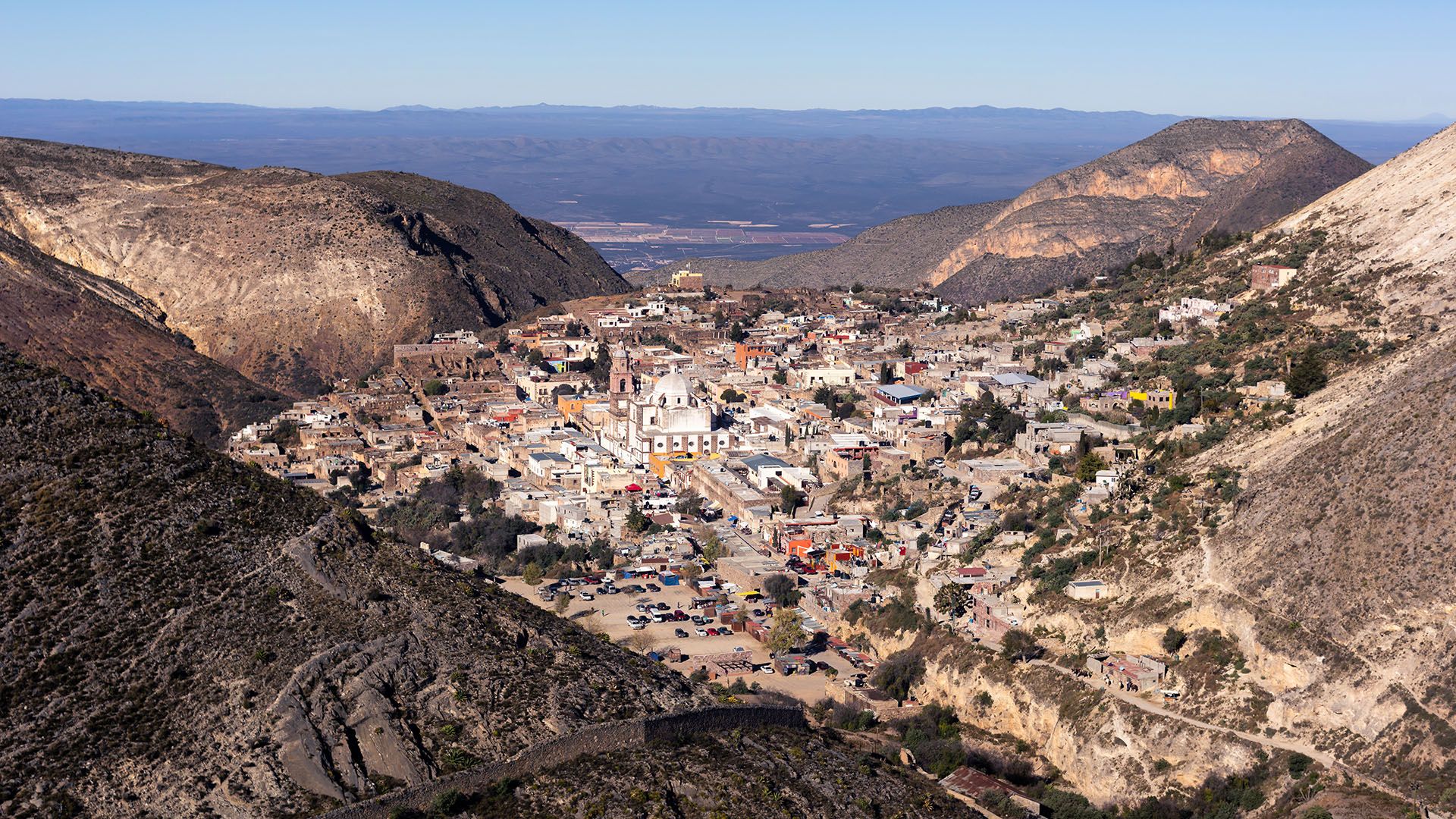
Real de Catorce, an old town in San Luis Potosi, Mexico © Shutterstock
With forest trails, lake kayaking, and open plazas to run around in, Valle de Bravo is a solid pick for exploring Mexico with kids. Just a few hours from Mexico City, it’s a nature-meets-colonial-heritage town that offers something for every age group.
Active families can bike or hike to waterfalls, paraglide over the lake, or visit nearby monarch butterfly sanctuaries from November to March. Back in town, the cobbled streets and shady plazas are stroller-friendly, and boat rides on the lake are easy to arrange.
There are boutique hotels with family-friendly amenities, and the restaurant scene is casual but high quality – think wood-fired pizzas, tacos, and local trout. Just avoid long weekends, when half of Mexico City seems to have the same idea.
Drive from Mexico City in around 2.5 hours. Buses also run from Terminal Poniente. Once in town, walking or biking is the best way to explore.
November to April is ideal – dry and sunny. Weekends can get busy, so go midweek if possible. Monarch butterfly season (late November-March) is a major highlight.
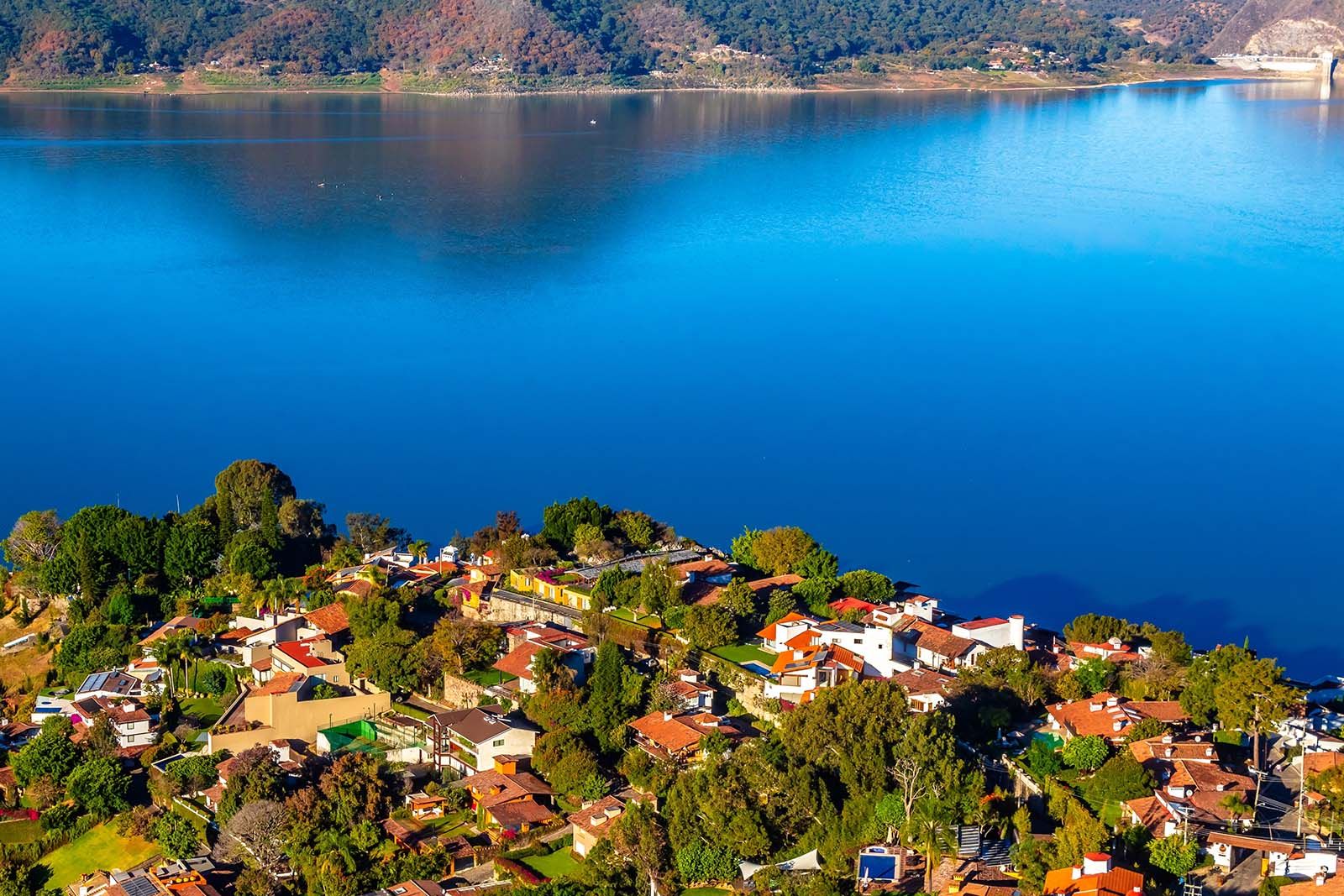
Lake in the morning seen from the rock in Valle de Bravo state of Mexico © Shutterstock
If you’re travelling for Mexican food, Pátzcuaro needs a spot on your list. Nestled beside a lake of the same name, this colonial town is steeped in Purépecha tradition and delivers some of the region’s most distinctive dishes.
Try uchepos (sweet corn tamales), sopa tarasca (a smoky, tomato-based soup), and corundas (triangular tamales wrapped in corn leaves). The local market is a feast for the senses – colorful produce, smoky comals, and rows of pan dulce stalls.
Beyond food, Pátzcuaro is best known for the Day of the Dead. The celebrations are deeply rooted here, especially on Janitzio Island, which lights up with candlelit tributes. Off-season, you’ll find a laid-back town filled with woodcraft workshops, old churches, and cool, misty mornings.
Buses run from Morelia (3 hours) or Uruapan (1 hour). You can also rent a car to explore the lake’s other villages.
Late October is magical for Día de los Muertos, but visit March-May or October-November for fewer crowds and ideal weather.
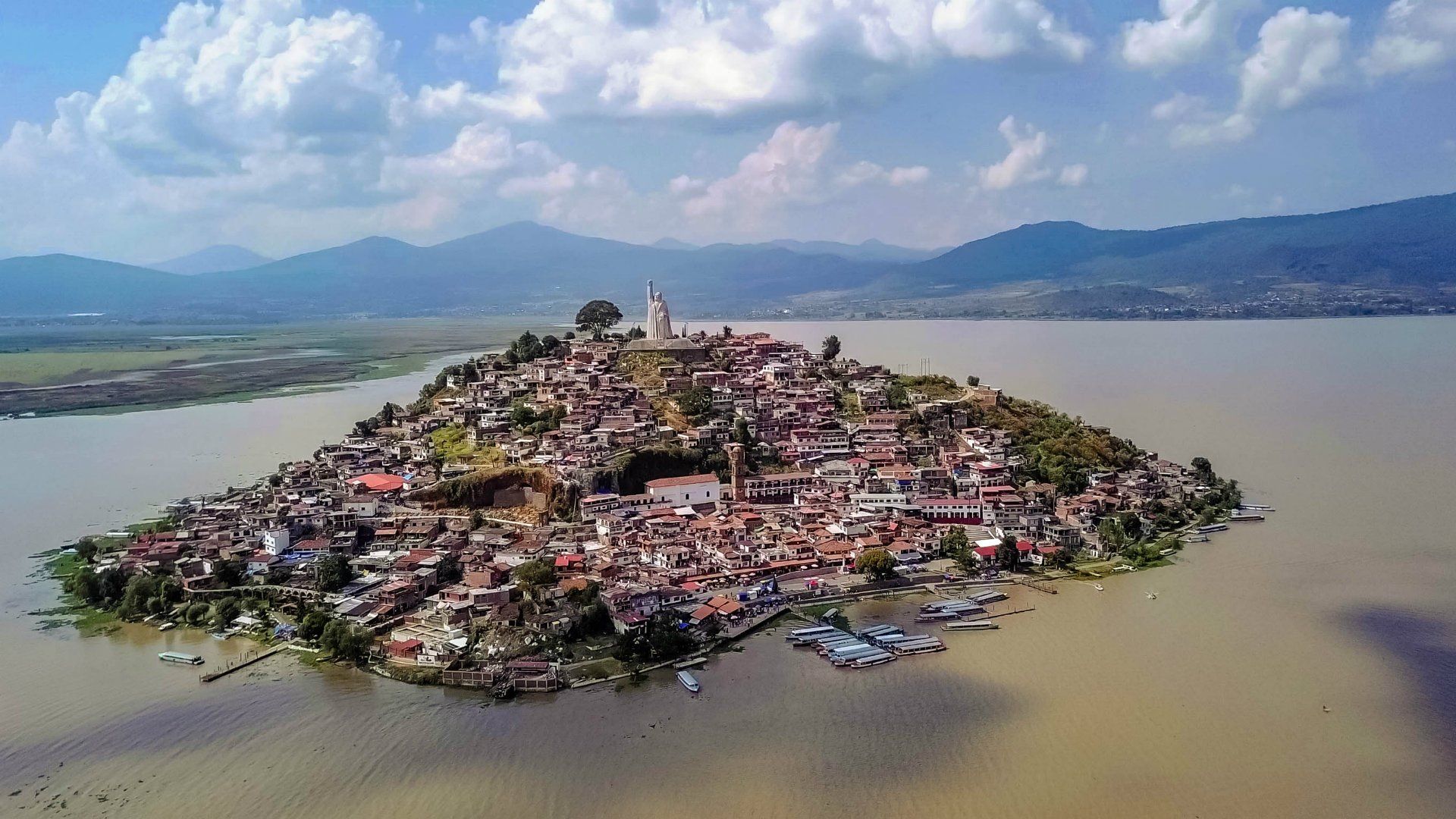
Patzcuaro, Janitzio, Michoacan, Mexico @ Shutterstock
Izamal is one of the best pueblos mágicos in Mexico for mixing history with quiet charm. Known as the Yellow City, almost every building here is painted in sunburst yellow – a colonial decision that’s since become a trademark.
But look a little closer, and you’ll find the Maya past still poking through. You can climb Kinich Kakmó, a pre-Hispanic pyramid with panoramic views, or explore the Franciscan convent built from temple stones. Izamal may be small, but it’s layered.
It’s also blissfully low on crowds compared to nearby Mérida or Chichén Itzá. Spend a night here, stroll the cobbled streets after day-trippers leave, and soak in the stillness.
Drive or take a colectivo from Mérida – about 1.5 hours. Day tours are common, but staying overnight gives you more breathing room.
Visit between November and March for cooler, drier weather. The heat ramps up from April to June – plan for early starts.
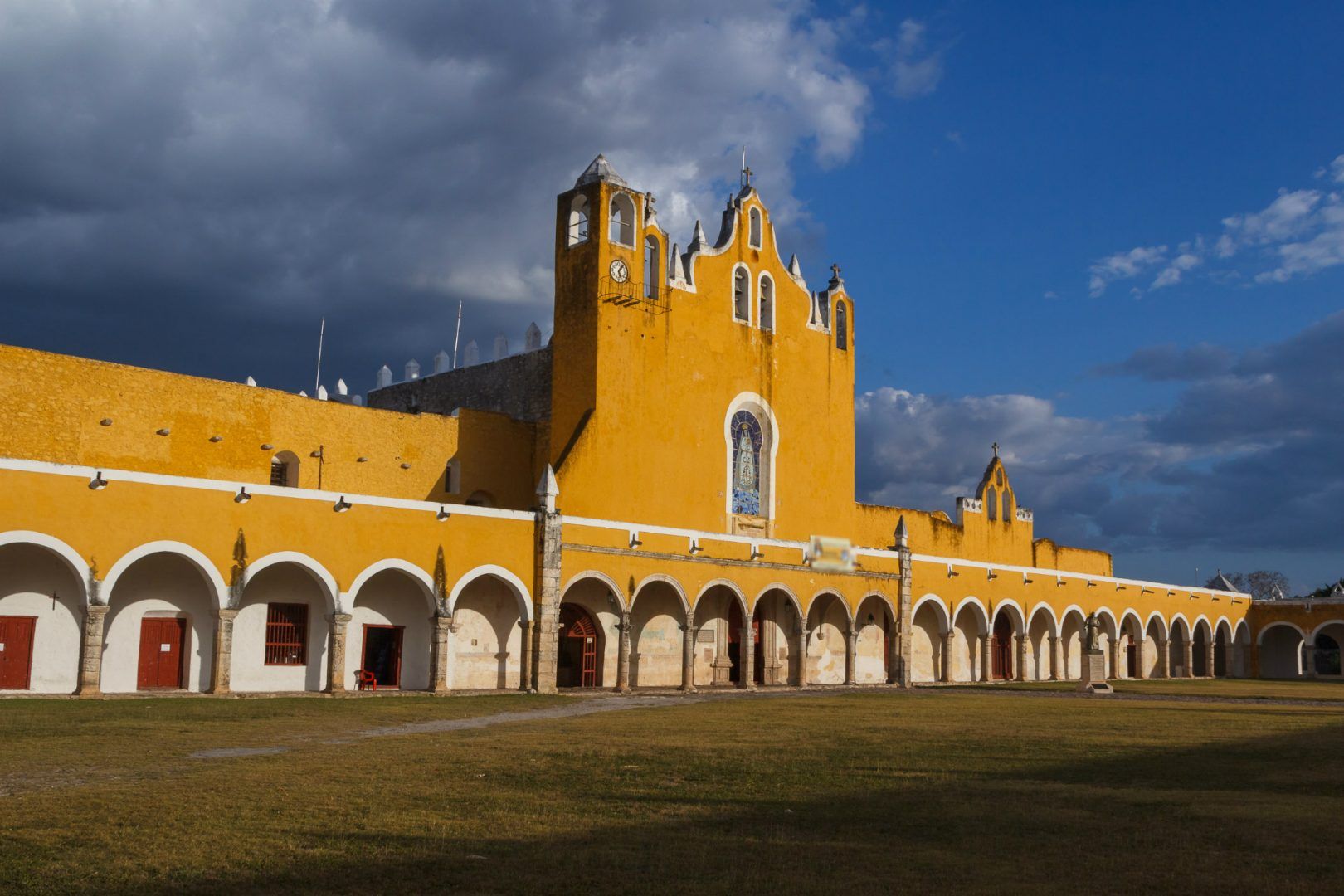
Izamal, Mexico @ Shutterstock
If misty forests, ancient rituals, and cobbled streets are your thing, Cuetzalan easily makes the cut for the best pueblos mágicos in Mexico. Perched high in the Sierra Norte de Puebla, this Nahua town offers a deeply Indigenous experience that feels worlds away from resort Mexico.
Traditional markets pop up weekly, selling embroidered huipiles, coffee, vanilla, and local liqueurs. Waterfalls and caves are a short hike away, and the voladores – traditional pole dancers – perform regularly in the main square.
Add in colonial churches, stone streets, and a climate that feels more Andean than Mexican, and you've got a town full of surprises. It’s rustic, authentic, and very much alive with culture.
Buses run from Puebla City (about 5-6 hours). Roads are steep and winding, so allow extra time if driving.
Best from October to April – drier, cooler, and great for hiking. Bring layers – evenings can be chilly and damp.

Photo taken in Cuetzalan, Puebla. Center part of Mexico © Shutterstock
Tzintzuntzan may not have the name recognition of San Miguel or Valle de Bravo, but when it comes to magic towns in Mexico with Indigenous roots and lakeside scenery, it’s hard to beat.
Once the capital of the Purépecha empire, the town still holds its ancient yácatas – curved, stone pyramids perched above Lake Pátzcuaro. You can climb them, with panoramic views of the lake and islands beyond.
The town itself is peaceful, with artisan workshops and a 16th-century Franciscan monastery. During Day of the Dead, it transforms into one of Mexico’s most atmospheric spots, with candlelit cemeteries and boat parades.
Just 25 minutes by colectivo or taxi from Pátzcuaro. An easy day trip if you’re based in the area.
Late October is peak – book early. For a quieter experience, visit between November and March when the weather is dry and mild.
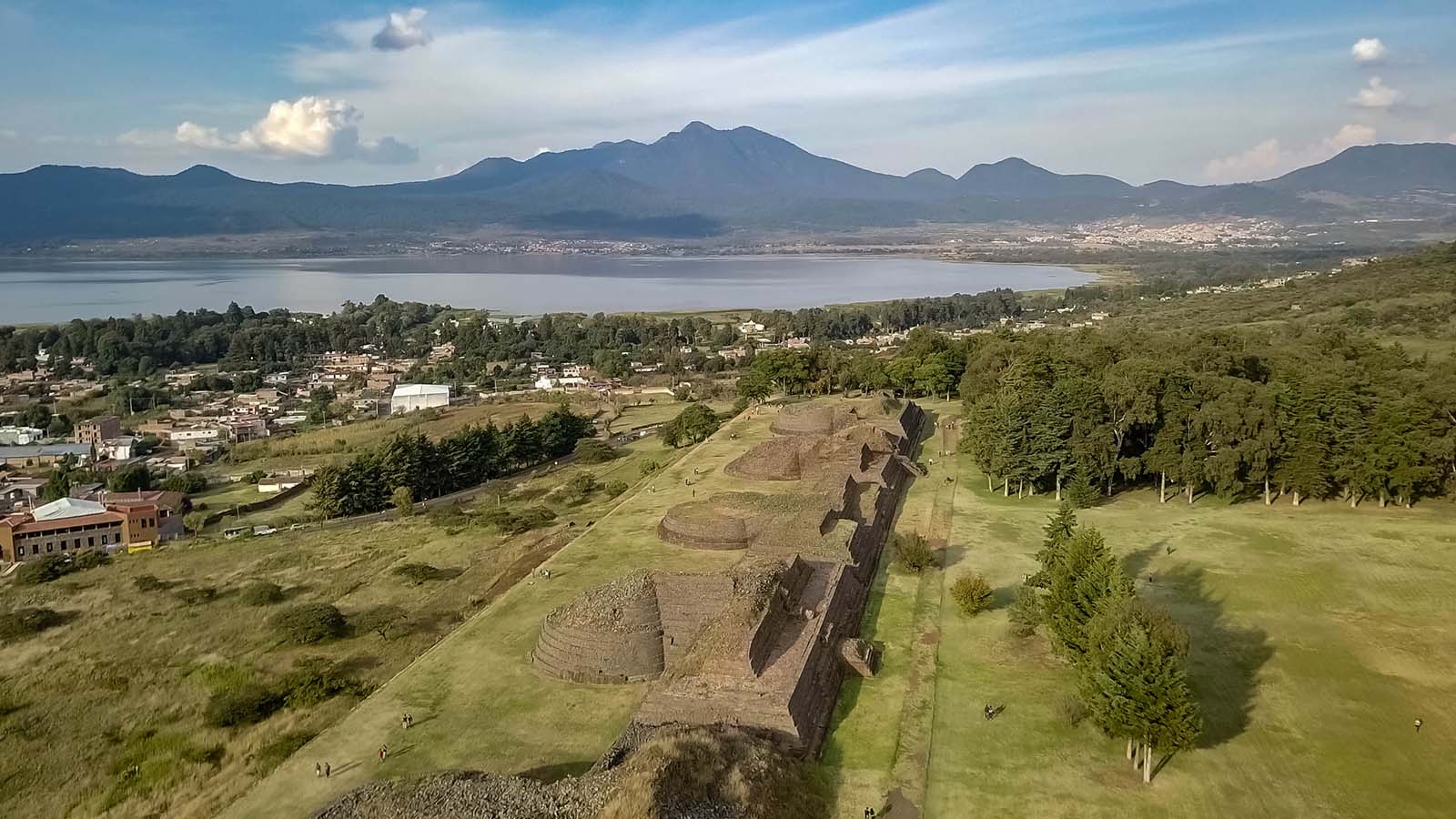
Aerial images of Tzintzunzan Michoacan © Shutterstock
San Sebastián del Oeste feels like time travel. Tucked into the misty mountains behind Puerto Vallarta, this 17th-century mining town is one of Jalisco’s best-kept magic towns – a peaceful place where cobbled lanes, tiled roofs, and crumbling stone facades haven’t changed much in decades.
The surrounding Sierra Madre is great for hiking and coffee-farm visits, and the altitude keeps temperatures cool – a welcome escape from the coast’s humidity. The town itself is quiet, with a few good cafés and hotels tucked into old colonial buildings.
Drive from Puerto Vallarta in around 2 hours. The road is winding but well-paved. No buses run directly, so private transport is best.
Visit between November and April for cooler, drier weather. Summer is greener but wetter. Midweek stays are especially tranquil.
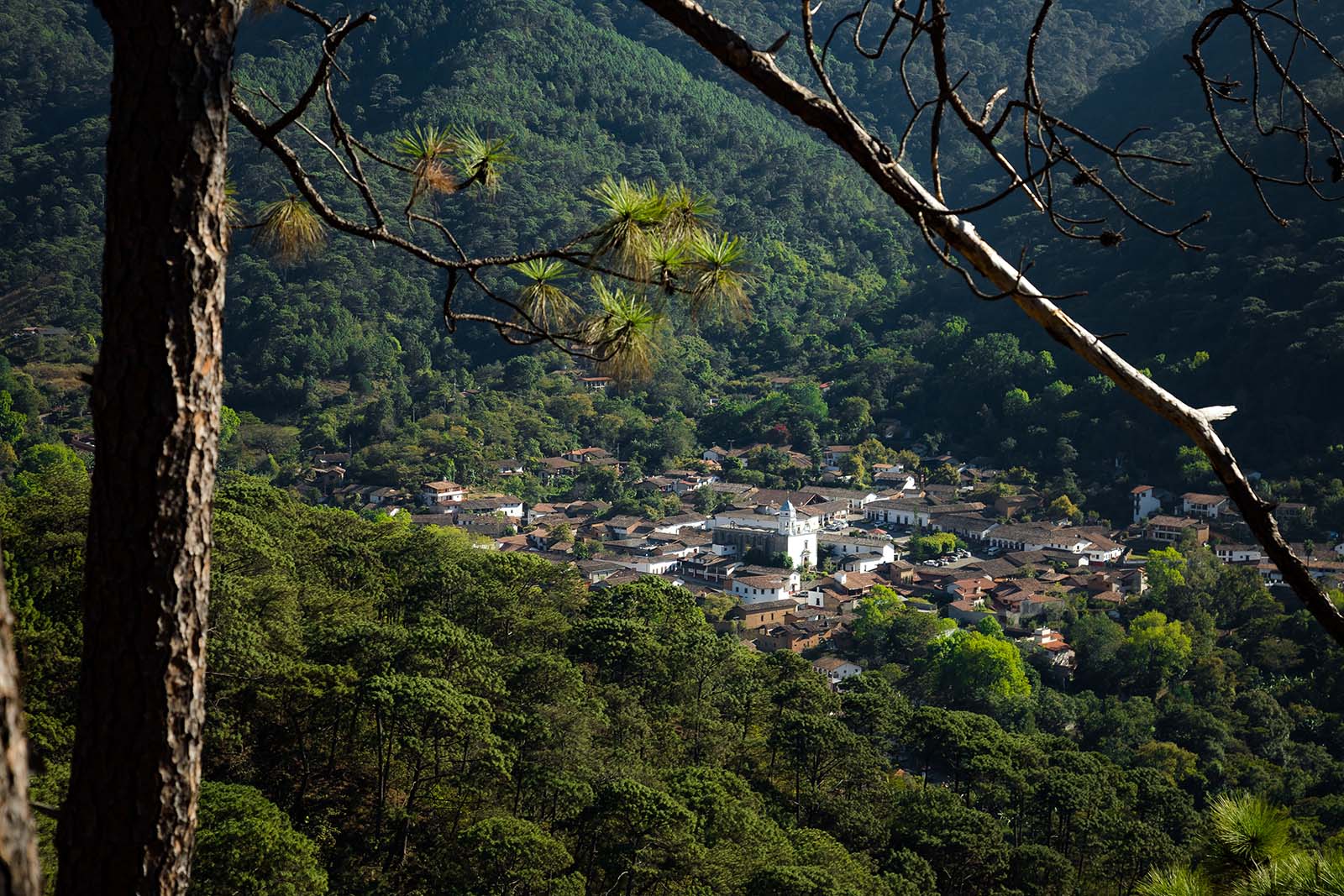
Town of San Sebastián del Oeste, Jalisco, México © Shutterstock
written by
Olga Sitnitsa
updated 12.08.2025
Online editor at Rough Guides, specialising in travel content. Passionate about creating compelling stories and inspiring others to explore the world.
Use Rough Guides' trusted partners for great rates
From travel safety to visa requirements, discover the best tips for visiting Mexico
Discover Mexico's most captivating stories